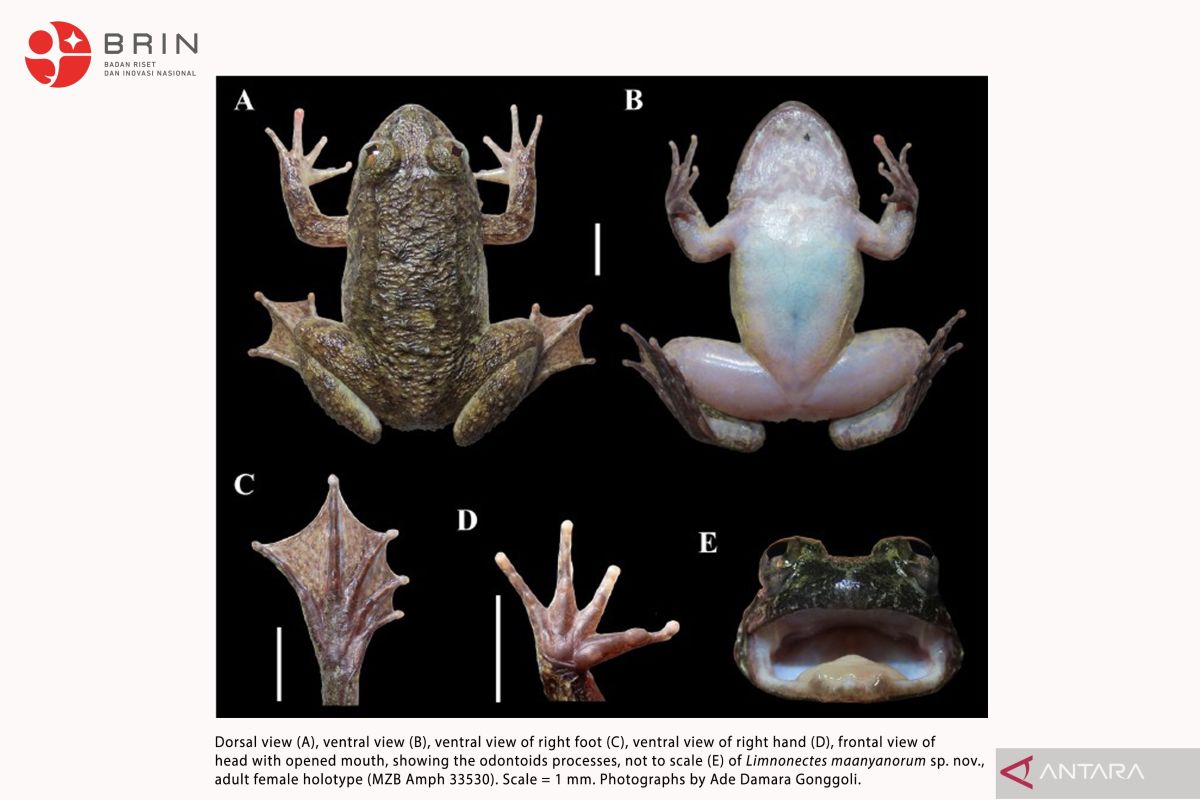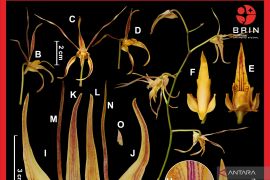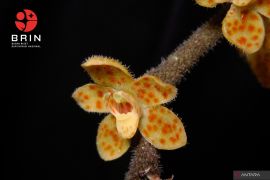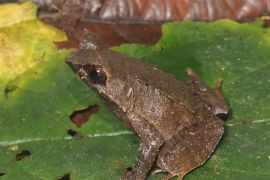The two species, Limnonectes maanyanorum sp. nov. and Limnonectes nusantara sp. nov., were previously mistaken for the common species Limnonectes kuhlii.
"This discovery is a significant contribution to documenting the herpetofaunal diversity of Kalimantan and highlights the critical role of the Meratus region in conserving endemic species," said Amir Hamidy, a herpetologist at BRIN's Center for Biosystematics and Evolution Research (PRBE), in a statement issued on Wednesday.
Limnonectes maanyanorum was found in the Mount Karasik region of Central Kalimantan. The scientific name honors the indigenous Dayak Maanyan people who inhabit the area. Locally, the frog is known as Senteleng Watu, or "stone frog."
Meanwhile, Limnonectes nusantara was discovered in the Loksado and Paramasan areas of South Kalimantan. The name "Nusantara" symbolizes Indonesian national identity and references the country's planned new capital in East Kalimantan. The Dayak Meratus people call this frog Lampinik.
"Both species are medium-sized and have distinctive fangs — bony protrusions on the lower jaw, especially in males. They have fully webbed toes, bumpy skin, and unique body colorations and patterns. The shape of the bumps and the size of the fangs help distinguish the two species," Hamidy explained.
Genetic and morphological analyses revealed that both frogs form distinct evolutionary lineages, based on differences in 16S rRNA gene sequences and a combination of physical traits.
Phylogenetic analysis confirmed that L. maanyanorum and L. nusantara each form monophyletic clades with high statistical support and are genetically distinct from other known species — validating their status as new species.
Hamidy emphasized the importance of continued biodiversity exploration and science-based conservation efforts in underexplored tropical areas like Kalimantan, part of the Sundaland region known for its high rate of endemism.
"This discovery proves Kalimantan still holds many biological secrets. We must continue our exploration and research, particularly in remote and lesser-studied areas," he said.
The discovery resulted from a collaborative effort involving BRIN, PRBE, Aichi University of Education, Kyoto University, and Palangkaraya University.
It was published in the international scientific journal Zootaxa (Zootaxa 5575 (3): 387–408) on January 24, 2025, under the title "Two new species of fanged frog from Southeastern Borneo, Indonesia."
Related news: Seven new freshwater lobster species discovered in W Papua
Related news: BRIN discovers new species of tree frog endemic to Sulawesi
Translator: Arie Novarina
Editor: Anton Santoso
Copyright © ANTARA 2025











